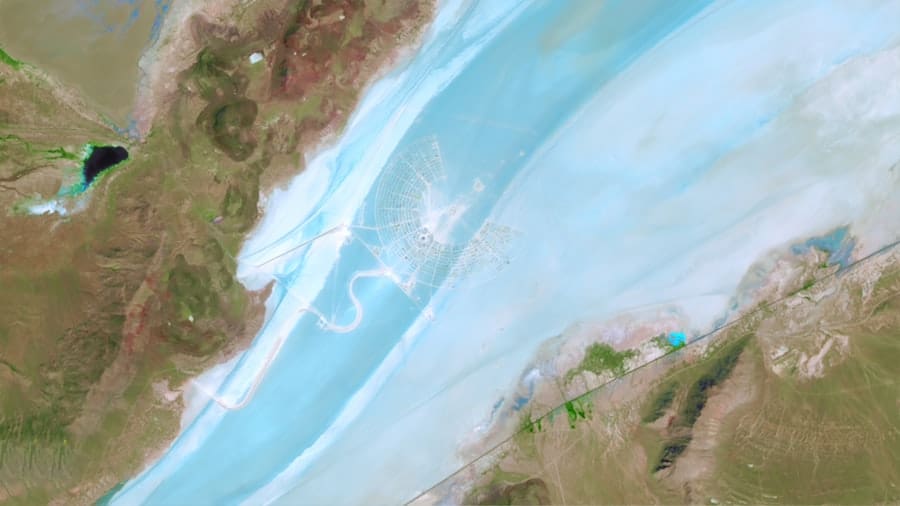The advent of artificial intelligence (AI) has revolutionized numerous fields, and space exploration is no exception. As humanity ventures further into the cosmos, the volume of data generated by space missions has grown exponentially. From satellite imagery to telemetry data from interplanetary probes, the sheer scale and complexity of this information present significant challenges for traditional data analysis methods.
AI, with its ability to process vast datasets quickly and identify patterns that may elude human analysts, has emerged as a critical tool in the quest to understand our universe. Space missions, whether they involve orbiting planets, landing on asteroids, or exploring the outer reaches of our solar system, generate a wealth of data that can be difficult to interpret. The integration of AI technologies into this domain not only enhances the efficiency of data processing but also opens new avenues for scientific discovery.
By leveraging machine learning algorithms and neural networks, researchers can extract meaningful insights from complex datasets, leading to a deeper understanding of celestial phenomena and the potential for groundbreaking discoveries.
Key Takeaways
- AI plays a crucial role in analyzing data from space missions, helping to process and interpret vast amounts of information.
- Advancements in AI technology, such as machine learning and deep learning, have significantly improved the accuracy and efficiency of space data analysis.
- Challenges in using AI for space data analysis include the need for high-quality training data and the potential for bias in AI algorithms, while opportunities include the ability to automate repetitive tasks and discover new insights.
- AI is applied in analyzing space mission data for tasks such as image recognition, anomaly detection, and predictive modeling, enhancing our understanding of the universe.
- AI helps predict and understand space phenomena by analyzing complex patterns and correlations in data, leading to new discoveries and insights in space exploration.
- Ethical and privacy considerations in AI-driven space data analysis include the responsible use of data, ensuring transparency in AI decision-making, and protecting sensitive information.
- Future trends in AI for space data analysis include the integration of AI with other advanced technologies, such as quantum computing, and the development of AI systems for autonomous space exploration.
- The potential impact of AI on space exploration and research is vast, with AI enabling new discoveries, improving mission success rates, and advancing our understanding of the universe.
Advancements in AI Technology for Space Data Analysis
Image Recognition with Deep Learning
Machine learning algorithms, particularly deep learning models, have shown remarkable proficiency in image recognition tasks. For instance, convolutional neural networks (CNNs) are now routinely employed to analyze images captured by telescopes and spacecraft. These models can identify celestial objects, classify them, and even detect anomalies that may indicate previously unknown phenomena.
Automation and Error Reduction
The ability to automate these processes not only accelerates data analysis but also reduces the likelihood of human error. Moreover, natural language processing (NLP) has made strides in analyzing textual data generated by space missions.
Enhanced Knowledge Synthesis
Scientific papers, mission logs, and communication transcripts can be processed using NLP techniques to extract relevant information and summarize findings. This capability is particularly valuable in synthesizing knowledge from multiple sources, allowing researchers to stay abreast of developments in the field without being overwhelmed by the volume of information. As AI technologies continue to evolve, their integration into space data analysis will likely become even more sophisticated, enabling more nuanced interpretations of complex datasets.
Challenges and Opportunities in Using AI for Space Data Analysis
While the potential of AI in space data analysis is immense, several challenges must be addressed to fully realize its benefits. One significant hurdle is the quality and consistency of the data being analyzed. Space missions often encounter unpredictable conditions that can affect data collection, leading to gaps or inconsistencies in datasets.
AI algorithms require high-quality training data to function effectively; thus, ensuring that the input data is reliable is crucial for accurate analysis. Researchers are actively working on developing robust preprocessing techniques to clean and standardize data before it is fed into AI models. Another challenge lies in the interpretability of AI models.
Many advanced machine learning techniques operate as “black boxes,” making it difficult for scientists to understand how decisions are made. This lack of transparency can be problematic in scientific contexts where understanding the rationale behind findings is essential for validation and further research. Efforts are underway to develop explainable AI (XAI) frameworks that provide insights into model decision-making processes, thereby enhancing trust in AI-generated results.
Despite these challenges, the opportunities presented by AI in space data analysis are substantial. The ability to analyze large datasets quickly can lead to faster discoveries and more efficient mission planning. For example, AI can assist in identifying optimal landing sites for rovers on Mars by analyzing terrain features and geological characteristics from satellite imagery.
Additionally, AI-driven predictive models can help forecast space weather events, which is crucial for protecting satellites and astronauts from harmful solar radiation.
Applications of AI in Analyzing Space Mission Data
AI’s applications in analyzing space mission data are diverse and impactful. One prominent area is planetary exploration, where AI algorithms are employed to analyze images captured by rovers and orbiters. NASA’s Perseverance rover utilizes AI to autonomously navigate the Martian surface, identifying safe paths and interesting geological features without direct human intervention.
In addition to planetary exploration, AI plays a vital role in astrophysics research. Telescopes like the Vera Rubin Observatory are set to generate petabytes of data through their sky surveys.
Machine learning algorithms are being developed to sift through this vast amount of information, identifying transient events such as supernovae or gravitational waves that require immediate attention from astronomers. By automating the detection process, researchers can focus their efforts on analyzing significant findings rather than getting bogged down by routine data processing.
The Role of AI in Predicting and Understanding Space Phenomena
AI’s predictive capabilities are particularly valuable in understanding complex space phenomena. For instance, machine learning models can analyze historical data on solar flares and coronal mass ejections to predict future events with greater accuracy. By identifying patterns in solar activity, scientists can develop models that forecast when these phenomena are likely to occur, allowing for better preparedness and mitigation strategies for potential impacts on Earth’s technology infrastructure.
Furthermore, AI is instrumental in studying exoplanets—planets outside our solar system—by analyzing light curves from distant stars. When a planet transits in front of its host star, it causes a temporary dimming that can be detected by telescopes. Machine learning algorithms can process these light curves to identify potential exoplanets and characterize their atmospheres based on spectral data.
This capability not only accelerates the discovery of new worlds but also enhances our understanding of their potential habitability.
Ethical and Privacy Considerations in AI-Driven Space Data Analysis
As with any technology that processes large amounts of data, ethical considerations surrounding AI-driven space data analysis are paramount. One concern is related to the ownership and use of data collected from space missions. As private companies increasingly participate in space exploration, questions arise about who has access to this data and how it can be used.
Establishing clear guidelines for data sharing and usage is essential to ensure that scientific knowledge remains accessible while protecting proprietary interests. Privacy considerations also extend to the use of AI in analyzing Earth observation data collected by satellites. While this information can provide valuable insights into environmental changes and urban development, it also raises concerns about surveillance and individual privacy rights.
Striking a balance between utilizing satellite data for scientific advancement and respecting privacy is a complex challenge that requires careful consideration and regulation.
Future Trends and Developments in AI for Space Data Analysis
Looking ahead, several trends are likely to shape the future of AI in space data analysis. One significant development is the increasing integration of AI with other emerging technologies such as quantum computing. Quantum algorithms have the potential to process vast datasets at unprecedented speeds, which could revolutionize how we analyze complex space mission data.
This synergy between AI and quantum computing may lead to breakthroughs in our understanding of fundamental astrophysical processes. Additionally, as more countries and private entities engage in space exploration, collaborative efforts will likely become more common. International partnerships could facilitate shared access to datasets and AI tools, fostering a global approach to space research.
Such collaborations may enhance our collective ability to tackle pressing questions about the universe while promoting transparency and ethical standards across different stakeholders.
The Potential Impact of AI on Space Exploration and Research
The integration of artificial intelligence into space exploration represents a transformative shift in how we analyze and interpret data from our missions beyond Earth. As advancements continue to unfold, the potential impact on scientific research is profound—enabling faster discoveries, enhancing predictive capabilities, and fostering a deeper understanding of celestial phenomena.
As we stand on the brink of a new era in space exploration powered by AI, the possibilities seem limitless. From uncovering the mysteries of distant galaxies to predicting solar storms that could affect life on Earth, AI’s role will be pivotal in shaping our understanding of the universe and our place within it. The journey ahead promises not only technological advancements but also profound insights into the nature of existence itself as we continue our quest for knowledge among the stars.
In a recent article on how smartwatches are enhancing connectivity, the potential for wearable technology to revolutionize data collection and analysis is explored. Just as AI is transforming the way we analyze data collected from space missions, smartwatches are providing new opportunities for gathering and interpreting personal health and fitness data. As technology continues to advance, the possibilities for leveraging data from various sources to drive innovation and discovery are endless.
FAQs
What is AI?
AI, or artificial intelligence, refers to the simulation of human intelligence in machines that are programmed to think and learn like humans. It involves the use of algorithms and data to enable machines to perform tasks that typically require human intelligence.
How is AI used in analyzing data collected from space missions?
AI is used in analyzing data collected from space missions by processing large volumes of data quickly and efficiently, identifying patterns and anomalies in the data, and making predictions based on the data. AI can also automate the process of analyzing data, freeing up human scientists to focus on higher-level tasks.
What are the benefits of using AI in analyzing space mission data?
The benefits of using AI in analyzing space mission data include the ability to process large volumes of data quickly, identify patterns and anomalies that may be difficult for humans to detect, and make predictions based on the data. AI can also automate repetitive tasks, freeing up human scientists to focus on more complex analysis and interpretation.
What are some challenges in using AI to analyze space mission data?
Some challenges in using AI to analyze space mission data include the need for high-quality and diverse training data, the potential for bias in AI algorithms, and the interpretability of AI-generated results. Additionally, AI systems may require significant computational resources and expertise to develop and maintain.
What is the future of AI in analyzing data collected from space missions?
The future of AI in analyzing data collected from space missions is likely to involve continued advancements in AI algorithms and technologies, as well as increased integration of AI into space mission data analysis workflows. This may lead to more efficient and accurate analysis of space mission data, as well as new discoveries and insights about the universe.



